Leanne Beetham was born in 1987 with a condition known as Arthrogyrposis Multiplex Congenita (AMC) which meant she would never be able to use her arms or walk. Consequently, Leanne has adapted to using her mouth to do most daily tasks, including creating artworks, which she has been creating since she was 3 years old. Along with being a highly accomplished artist, Leanne is also a member of the Mouth and Foot Painting Artists (MFPA) – a global community of disabled artists who through accident, illness or disability have learn to create artwork by holding a brush or pen between their toes or in their mouth. We caught up with her to find out more about her work, and how the organisation has helped her on her journey.
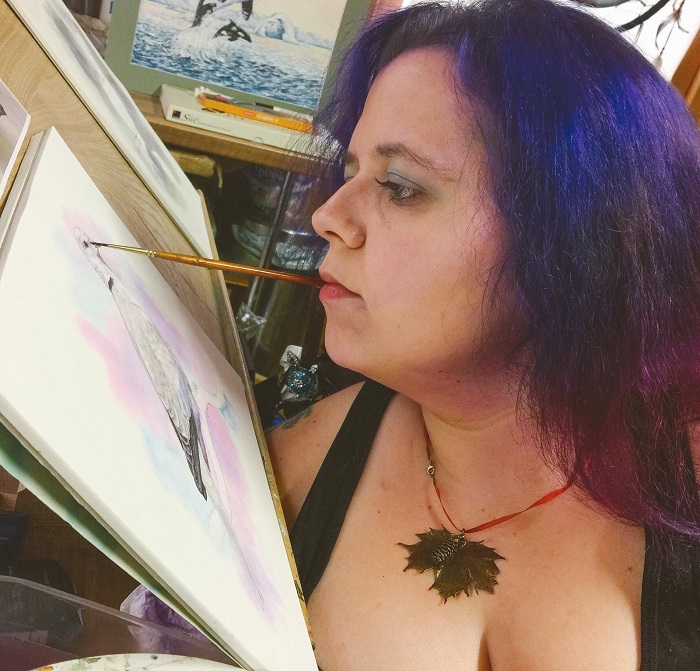
Tell us your background, and how you got involved with the Mouth and Foot Painting Artists (MFPA)
In 2000 (whilst at Kingswood High School), I had interest from a local publisher who printed an artwork of mine as a Christmas card; it got much interest in the media (newspapers, TV, and radio) and Katrina Gardner contacted me about my work; she met with me at my home and told me about the MFPA. We got the ball rolling and I submitted some of my work. I maintained contact with Katrina and we became good friends. She put me in contact with tutor Steve Waller, so that I could learn more skills (we also became long-term friends). To this day Katrina and I still occasionally meet up to do projects together – mostly talking to children in local schools, showing them how we paint, and getting the children to try it for themselves – which they really enjoy!
In 2001, I applied to Whizz Kidz to fund a project called “Nature Is Great!” – my aim was to use my wildlife artworks as part of an exhibition, raising awareness on the importance of disabled access in wildlife parks; I visited several parks, met with the rangers, and advised on how disabled access can be improved. During this time, Whizz Kids decided to find me a mentor, to hone my skills as an artist – ironically I was assigned to MFPA artist John Clayton! The project was a great success, and in 2002 I received a “Whizz Kidz No Limits Millennium Award”.
Eventually I met with Tom Yendell, who really liked my work, and invited me to one of the MFPA’s annual meetings in Hampshire. I met with those who asses the artworks, they expressed interest, but unfortunately I was too young to be taken-on at that point. I was encouraged to continue my work, continue my tuition, invited to future meetings, and I received free art materials from the MFPA, as well as funding towards my tuition and to build an extension on my house so that I could have my own studio.
In 2004, I received a Student Scholarship with the MFPA, and continue to work with them to this day!
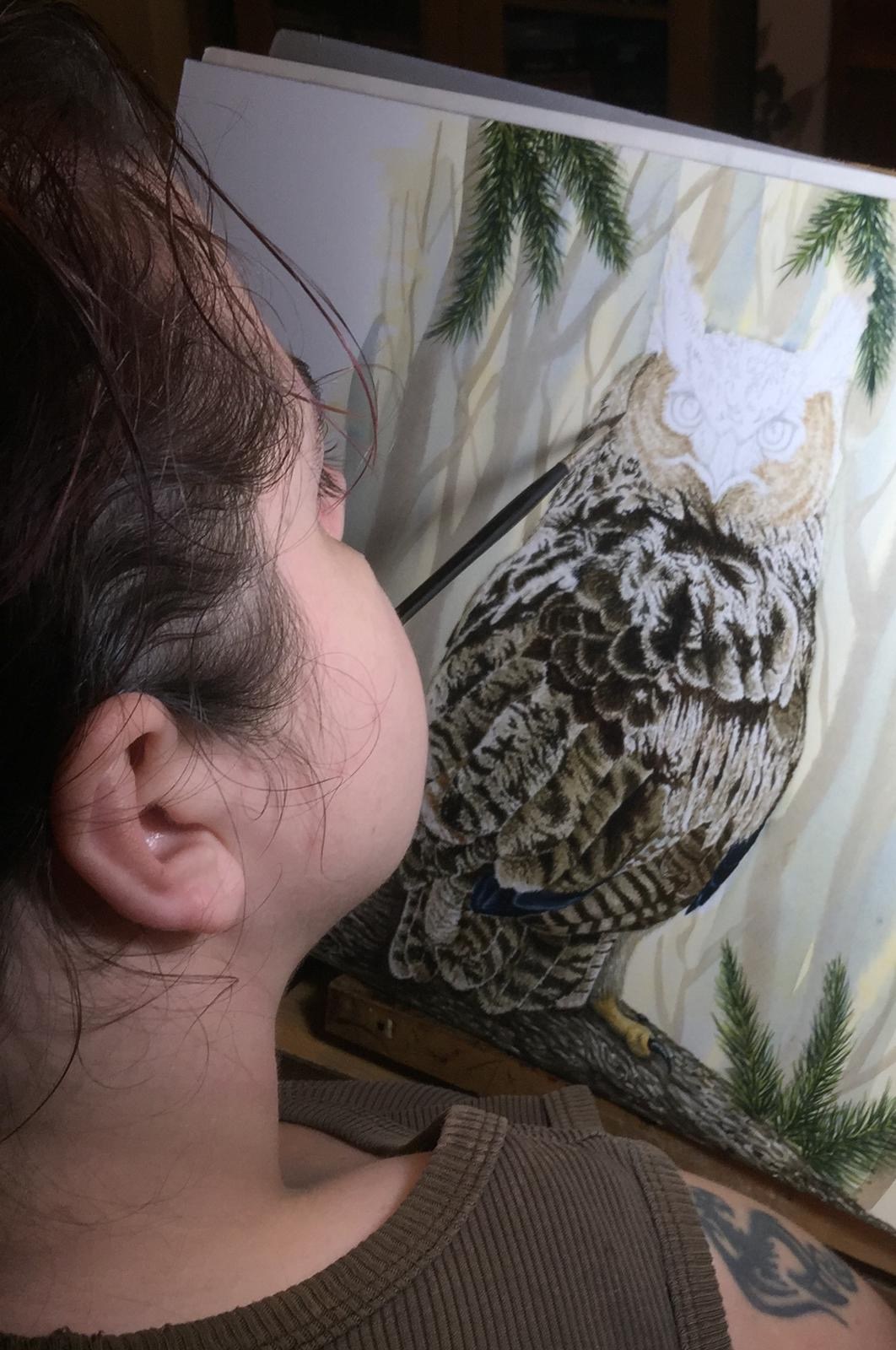
What is the MFPA and how can it help artists who have lost the use of their hands and feet?
The MFPA (https://www.mfpa.uk) is an international partnership formed by German mouth artist and sculptor, Professor Arnulf Erich Stegmann (polio victim). It is part of an international self help association of artists who paint without the use of their hands; the group is not a charity but a wholly owned organisation, run by the artists for the benefit of the artists. Our vision is simple – to live fulfilling life without charity. We do this by creating art and then using that to produce cards, calendars, jigsaws, and many other products!
For me personally, it enables me to live the life I want, doing the thing I love most in this world, and have complete artistic freedom. The MFPA isn’t just work to me either, it’s a huge extended family! They have been a constant source of inspiration, support, encouragement, and security; I aspire to one day be promoted into Full Member artist.
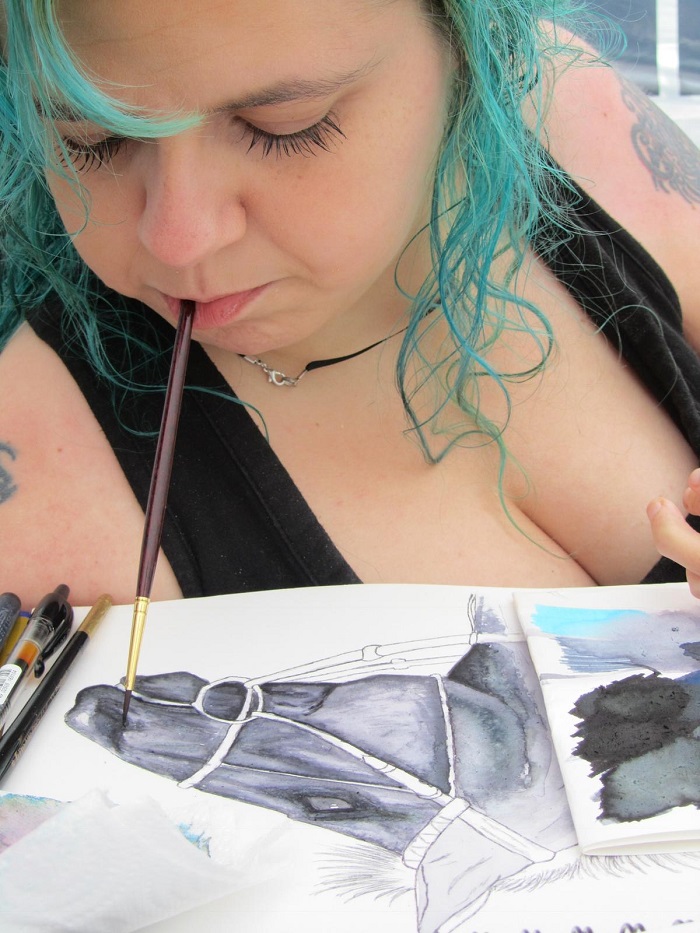
What inspires your work?
I adore nature, life, and love to capture and preserve moments in time, things which can never be repeated, things which make a subject unique in that moment – it has constantly fed my motivation both in art and photography. Whether you’re painting a landscape or animal, no one will ever see it in the exact same way you do in that moment. In that sense, it’s why I love art so much – the emphasis shouldn’t be on your labelled “style” or what materials you use, or even how you achieve it – that’s all irrelevant. Every piece is unique and a personal part of that individual; it’s an insight into how they see the world, and no one else will ever see it in exactly the same way. Even the artwork itself will be interpreted by others differently.
I’m also strongly motivated on raising awareness of the things I am passionate about – disability and wildlife conservation. Through my work, I endeavour to break stereotypes, challenge perceptions, push boundaries, and inspire others to create – no matter what their abilities.
Wildlife conservation and preserving natural spaces is very important to me. If my artworks can help someone see the beauty in something which they normally wouldn’t take a second look at (such as appreciating the beautiful iridescent colours of a common starling), or motivate them to think about something they normally wouldn’t consider (such as appreciating the amazing intelligence of a crow, or even a simple appreciation for the fact that disability doesn’t have to stop you achieving your goals), then I’m happy. The value we place on wildlife – or anything else – shouldn’t just focus on our idea of traditional beauty or stereotypes. To me, the life of a spider is just as important as that of a tiger; they all deserve our respect and admiration – the world is an amazing place if you open your mind and take the time to truly look.
There are many stereotypes surrounding the subject of disability, but not many are aware of the realities. Disability does not mean “inability”; we are all able in our own way. Having a disability simply means that we may do things in a different way, or take a different approach to the norm – and yes, in certain circumstances that includes requiring physical help from others. Oftentimes we are forced to use our imaginations more in order to innovate, and find new ways of doing things.
Both of these subjects are the reason I focus much of my energy on public talks and painting demonstrations. My work isn’t JUST something to hang on a wall, it’s also my voice and there to inspire.
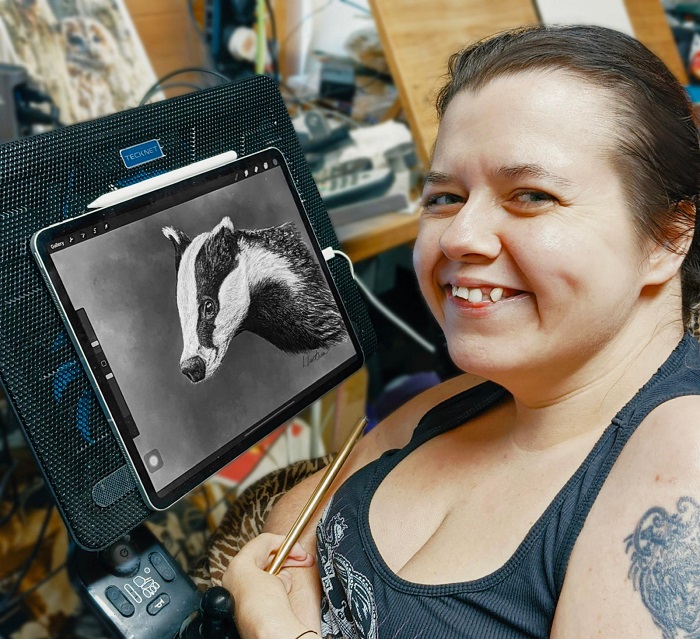
What advice would you give to any budding artists at the beginning of their mouth and foot painting journey?
2 things…
We only fail if we give up; any thing else is simply a learning curve. That sounds really cliché, but we often take for-granted those things that don’t work for us – they’re what bring you closer to finding what’s right for you and achieving your goals! This applies to both finding the right tools and adaptations for you, and the painting process itself.
Find inspiration everywhere you can and push yourself beyond your comfort zone! For me it’s being outdoors, but if that’s not possible for you (like it hasn’t been for me this past year due to covid19), there are also things in your immediate environment – observe how light falls on various objects, how it reflects & refracts through your glass of water, etc; there are learning opportunities, inspiration, and artistic challenges everywhere!
The community has been going strong for over 60 years, and in the UK there are over 30 artists who are able to lead financially independent lives through the sale of products by the MFPA featuring their artwork.
To shop the full collection of stunning artwork created by members of the MFPA click here – and to get 20% discount for Danny’s Dream childrens book use the coe struggle20

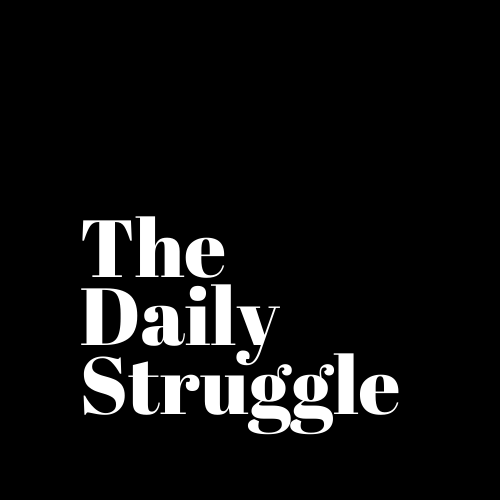
Just a group of real women dealing with life’s daily struggles! Want to write for us? Email: hello@thedailystruggle.co.uk